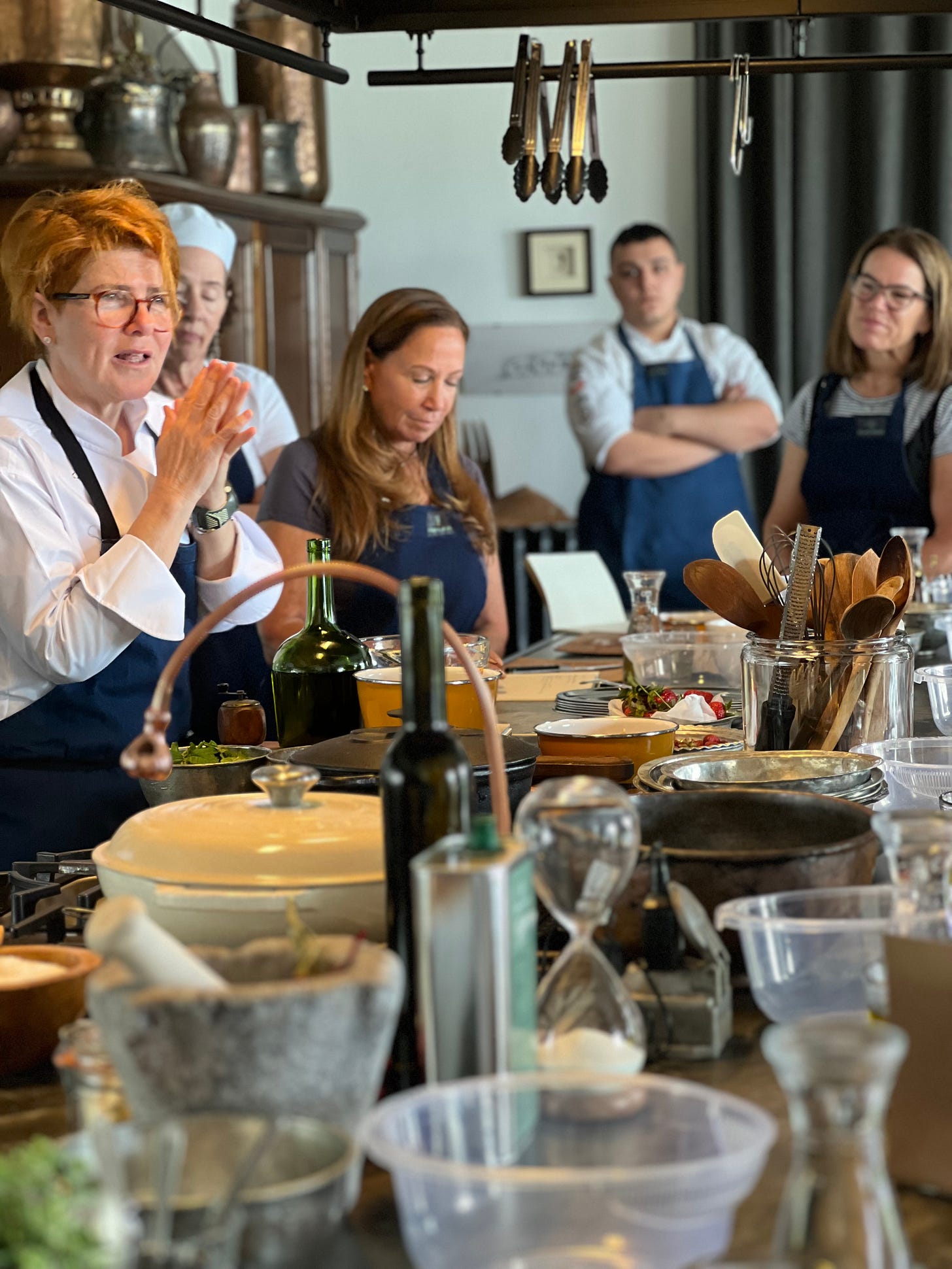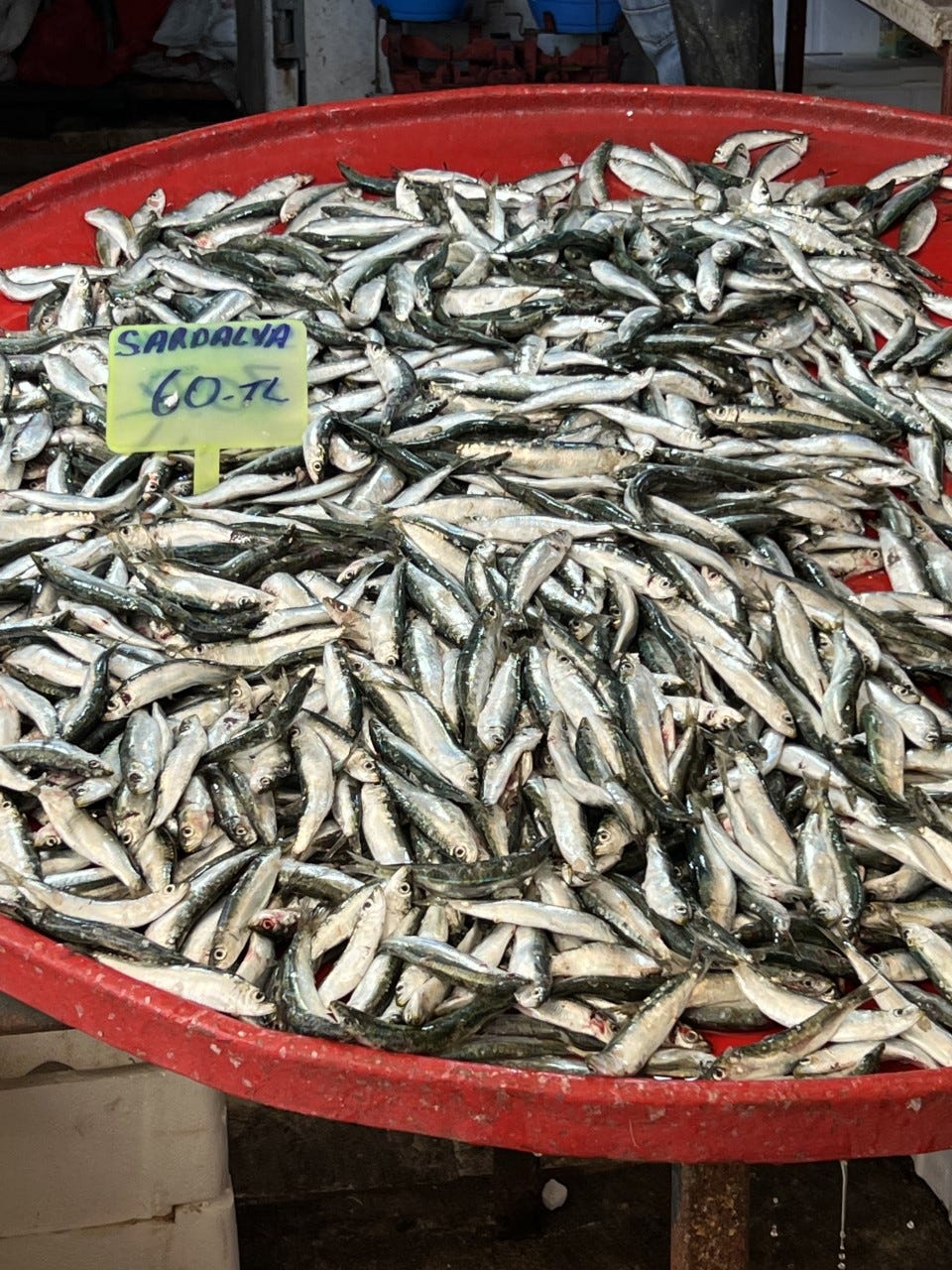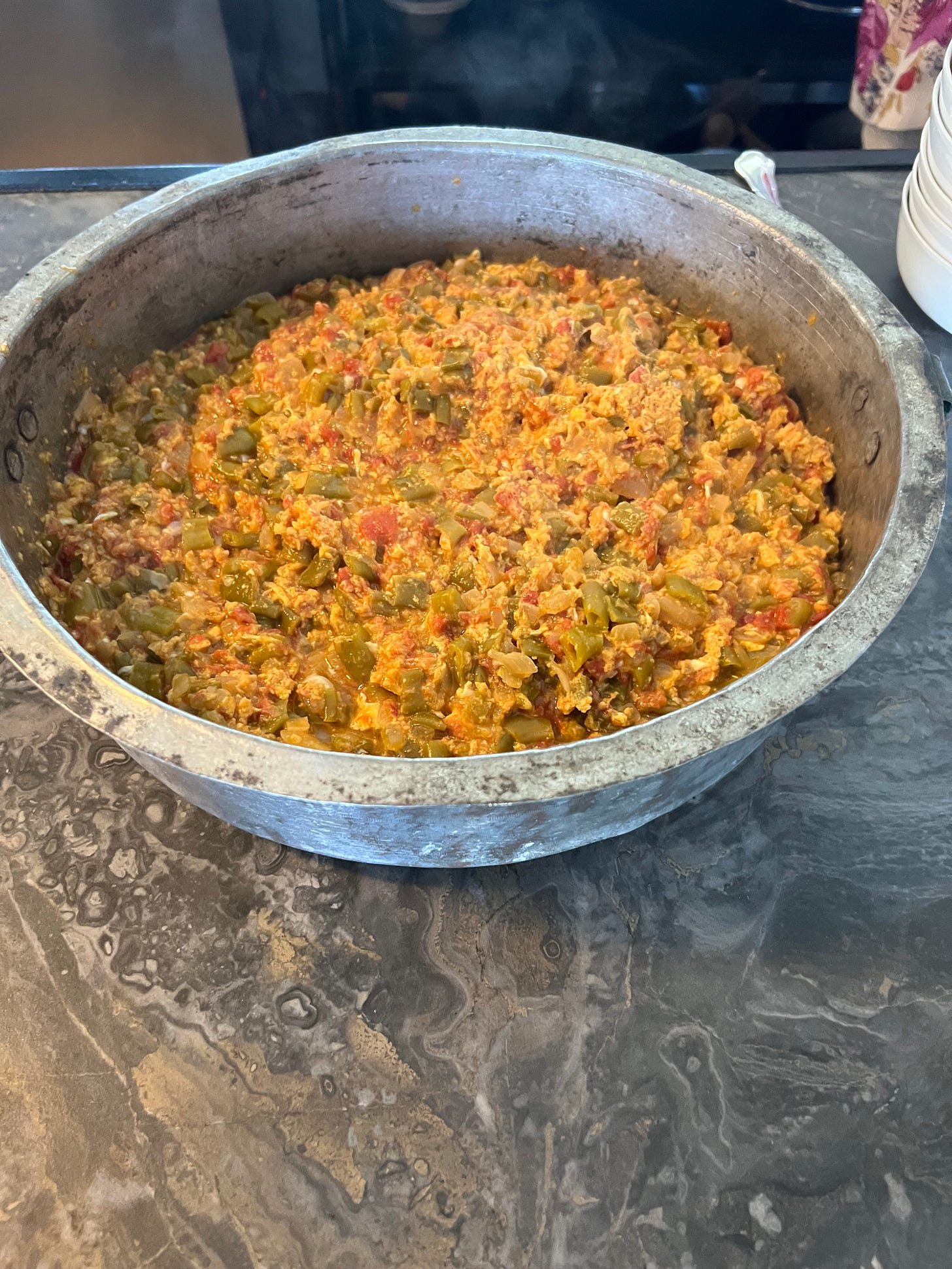5 ways to bring the Mediterranean home with you (from Turkey!)
Lessons from a week traveling (and eating) in Turkey
Traveling with Oldways means culinary travel with a chef – travel that feeds your soul, nourishes your mind and delights your palate. Oldways Culinarias are filled with market and farm tours, cooking classes, visits to producers of cheese, wine, vinegars, olive oil, tahini, and more, plus excursions to cultural and historic sites.
As I write, I’m flying home from an Oldways Culinaria in the Turkish Aegean and Istanbul, one that featured all of the above, plus a hands-on cooking class with a well-known Turkish chef, Semsa Denizsel. Semsa closed her Istanbul restaurant Kantin a few years ago, and then opened Cooks Grove, a perfectly gorgeous cooking school and garden north of Ayvalik, surrounded by olive trees as far as the eye can see, and with a view of the Aegean Sea.
We were also fortunate to have Chef Ana Sortun of Oleana and Sofra Restaurants with us. As she always does, Ana gave wonderfully informative and practical lectures on spices as we visited spice markets, and presented a cooking class on Turkish breakfasts (see more below). Our friend and expert on Turkish food and culinary history, Banu Ozden, rounded out the culinary experience with two market tours in Istanbul – one at the Egyptian (Spice) Bazaar and one at the daily Kadikoy market.
There’s a reason for each part of the Culinaria. Our aim at Oldways, in addition to having a fabulous time and learning about the history, culture and agriculture of a place, and making wonderful new friends (quite often, connections that last a lifetime), is to fulfill our mission of helping people live healthier, happier lives through cultural food traditions, like the Mediterranean diet. Simply put, we hope people will bring the old ways of the Mediterranean diet and lifestyle back to their daily lives.
In honor of Mediterranean Month (an annual celebration every May) and taking lessons from our most recent Culinaria on the Turkish Aegean coast and Istanbul, here are 5 ways to bring the (Turkish) Mediterranean diet home for a happy and healthy life.
1. Add mezze to your repertoire.
This is one Turkish tradition that you may have already adopted, perhaps not knowing you have. As food writer Claudia Roden wrote in her book, A Book of Middle Eastern Food, “Mezze are ideally suited to the western way of life. A small assortment can be served with drinks at parties, and a wider choice provides an exciting buffet dinner. There are many different kinds of mezze, simple and elaborate.”
A Turkish meal starts with a choice of small-sized vegetable and bean dishes and soups. Easy to follow in the US with hummus and pita, tzatziki, baba ganoush with crudité already available in grocery stores.
In a Turkish restaurant, you go to the counter and look at all the different cold starters in a case to make your choice. Even though you’re not in a Turkish restaurant, try small plates or mezze that may be new to you --grilled eggplant, stuffed peppers, or create your own mezze using seasonal vegetables and beans.
2. Add more vegetables and fruits – especially seasonally.
Turks eat more vegetables than any other population, except for China. Eggplants are ubiquitous on the Turkish table, even with desserts (this may sound crazy, but it’s very delicious). As is true in most of the Mediterranean, seasonality is important. Artichokes are in season right now in Turkey – we saw them everywhere – in gardens and farms, at the market and on the table (also as decorations!). Strawberries are also in season, and they were omnipresent, much to our enjoyment in the many salads we had.
Olive oil is key to cooking vegetables. As Greek nutrition scientist Antonia Trichopoulou has always said, it’s olive oil that makes the vegetables go down. If you haven’t tried Turkish olive oil before, look for some from Ayvalik, the olive oil capital of Turkey.
Our seasons may be different than those in Turkey but to bring the Turkish Mediterranean diet to your home, try mastering cooking one new vegetable per season – with extra virgin olive oil. One of the best books to help you along is not Turkish, but Italian-inspired. I love Mary Ann Esposito’s newest book, Ciao Italia Plan Harvest, Cook! that has a seasonal produce focus (and we interviewed her about it last year!) Her books are easy to follow and inspirational.
3. Be smart about non-plant protein.
With the sea all around us, we ate a lot of fish and seafood in the Turkish Aegean region. We also attended the fascinating daily fish auction in the town of Urla, plus saw plenty of fish in the markets near Ayvalik and also in Kadikoy, one of Istanbul’s neighborhoods on the Asia side (Istanbul is the only city in the world that is in two continents – Europe and Asia!). Take a cue from this example and current nutrition research that advises eating fish and seafood twice a week. Check out Oldways’ recipe page for Mediterranean (and Turkish recipes for cooking fish simply and deliciously).
Meat – primarily lamb and beef – is a part of the Turkish diet. Think shish-kebobs, where the amount of meat is very small. At one restaurant in Istanbul we enjoyed a sampling of grilled meats, where the size of each serving of meat was the size of a half a dollar – one bite or two bites at the most. If you do eat meat, this is a smart example to follow – small amounts of very flavorful, sustainable meat, every once in a while.
4. Rethink Breakfast.
We enjoyed very generous and expansive breakfast buffets wherever we stayed. Of course, we saw, the usual western dishes of scrambled eggs, toast, pancakes, French toast, cereal and granola. What makes the Turkish breakfasts so different and interesting are first, the salads and vegetables and huge selection of olives, and also some of the special dishes such as Menemen, an egg dish with tomatoes, scallions tomato and pepper paste, and Gozleme, a flat bread stuffed with spinach and feta that is also a common street food.
You might also love a salad-like breakfast of rocket or arugula with tomatoes and other vegetables, sometimes pickled vegetables, along with grilled olives and perhaps a bit of cheese. Add some fresh or dried fruit, and you’re ready for the day.
In her cooking demonstration at Cooks Grove, Chef Ana Sortun made both Gozleme and Menemen, and as you can see below, we enjoyed them along with string cheese, pitas, salads and strawberries.
5. Take time to enjoy everything around you.
The very base, the foundation of the Mediterranean Diet Pyramid, features lifestyle attributes – physical activity, cooking, gardening, having meals with family and friends. They are all important.
A lesson from traveling – whether it is Turkey or Japan or Italy or Mexico – is taking time to enjoy what you see and hear and taste, and what you learn. It’s a great one to bring home every day, adding to a happier and healthier life.
Happy travels, happy Mediterranean Diet Month, and here’s to keeping everyday life as wonderful as those days of travel.
JOIN US ON A FUTURE TRIP - Switzerland, Sicily, Thailand, Parma, or Greece!












I've recently moved to Istanbul and have loved discovering its culinary delights! Definitely taking note of your tips above :)
Hey Sara! It's great to find another travel and food blogger :) I just wrote a food tour of my month-long trip to Vietnam, and was wondering if you'd be interested in sharing it on (Always) Hungry for Travel as a guest or cross-post? It's here if you want to check it out: https://lovefromeden.substack.com/p/a-20-day-food-tour-of-vietnam ❤️